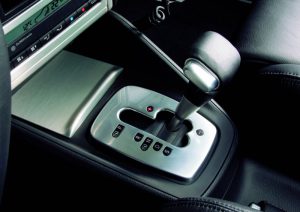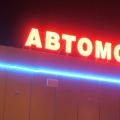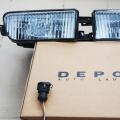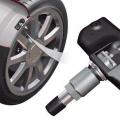When buying a car, every motorist wants to get not only comfort and reliability, but also economy. The choice will depend on many characteristics of the car: class, model, and also the type of transmission.
In this case, special attention should be paid not only to the internal combustion engine, but also to the choice of transmission. Modern cars today are equipped with: a manual gearbox, a "classic automatic", a variator, a robotic gearbox such as AMT or DSG ().
Given such a variety of machines, it is important to know how to distinguish an automatic gearbox from a robot. Next, we will look at how to visually distinguish an automatic machine from a robot, as well as how these gearboxes generally differ.
Read in this article
What is an automatic machine and what is a robot box
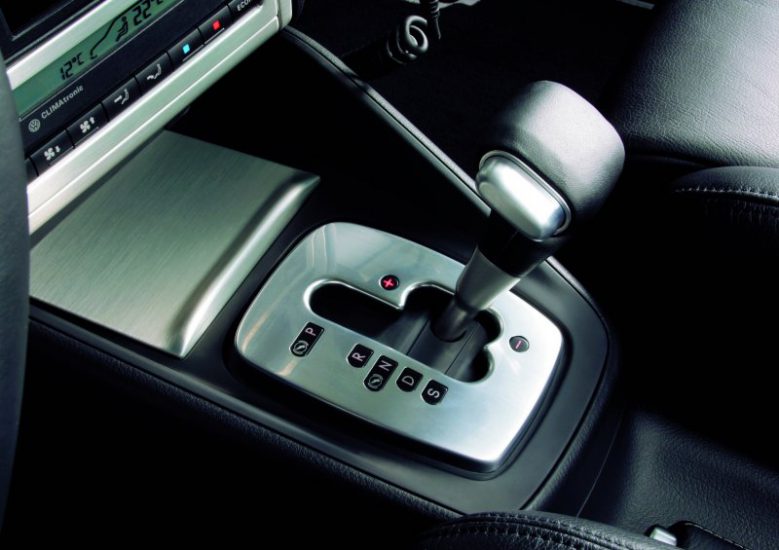
So, let's consider an automatic and robotic gearbox. First of all, the main function of all automatic transmissions and manual transmission mechanics is transmission to the wheels, as well as changing the amount of traction depending on a number of conditions.
If on mechanics the driver changes the gear ratio manually, then the machine performs this task independently. Also, automatic transmissions differ in their structure and principle of operation. In other words, the purpose of all checkpoints is the same, but structurally they are all different.
If we return to robots () and classical automata (), the differences are clearly visible in comparison. An automatic transmission based on a hydromechanical automatic transmission unit is a rather complex solution in terms of design.
Such an automatic machine is a hydraulic control system (replacing the clutch and valve body), as well as a planetary gearbox containing all pairs of gears that are in constant mesh. Depending on the engine speed, gear shifting in the box is carried out automatically (without the participation of the driver).
Robotic transmission (RKPP) is a box that, in its design, resembles, only with a control unit (hydraulic and servo drives that control the operation of the clutch and shift gears and modes).
How to distinguish an automatic gearbox from a robot: structural and technical differences
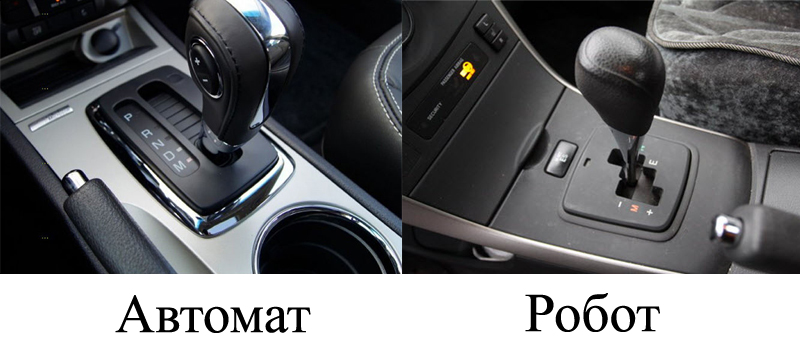
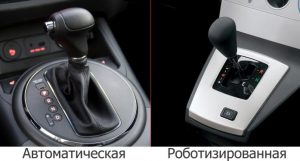
Automatic transmission and manual transmission are technically very different boxes. As mentioned above, the automatic transmission is a box with a torque converter and electronics, and the manual transmission is a conventional manual transmission with special servos (actuators), which allow automating processes such as engaging / disengaging the clutch and selecting / engaging a specific gear.
The main differences between a classic machine and a simple (single-disk) robot:
- Automatic transmission is much more expensive than manual transmission;
- lack of servomechanisms in automatic transmission;
- fuel consumption and the amount (volume) of lubricating fluid in the automatic transmission is greater;
- the reliability of the automatic transmission is higher in comparison with the manual transmission;
- compared to a robot, repairing an automatic box can be more expensive and longer;
- automatic transmission, unlike a robot, shifts gears smoothly and gently (without jerks and jerks);
- design differences (an automatic machine is a hydromechanical unit, a robot is a mechanics with an ECU);
- Automatic transmission - more stable and comfortable transmission;
We also add that it is precisely among robots that there are so-called preselective boxes. These gearboxes are all the same mechanics, but they differ from analogues by the presence of two clutches and a more complex design.
How to distinguish an automaton from a robot visually
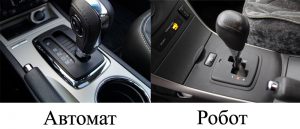
In some cases, it is almost impossible to visually distinguish a classical automaton from a robot without experience, especially when it comes to preselective robots of the DSG type. The fact is that the console and boxes are often practically the same.
However, the robot often does not have separate ones, which are often found on automatic transmissions (L2, L1). Although, if the automatic transmission is equipped with a mode, then there may not be such modes either.
The difference can often be felt only while driving and, accordingly, when switching speed modes. For example, in a robotic box, gear shifting often occurs with pauses (typical for).
This causes discomfort and inconvenience while driving, especially in city traffic (changing gear, the car stops accelerating for a while, after which it starts moving with jerks).
- By the way, Volkswagen was the first to solve this problem by releasing a robotic gearbox with two clutches (DSG, S-tronik and PD). This made it possible to reduce fuel consumption by 15–20% in comparison with automatic transmissions.
Moreover, the operation of a robotic transmission with two clutches began to strongly resemble a hydraulic automatic (such a robot, like an automatic, quickly changes gears, there are no jerks, pauses and failures, the traction is even and predictable).
Robotic transmissions, like most automatic transmissions, are equipped with a manual gear selection function (Tiptronic). It is very convenient for long mountain descents. However, the presence of such a mode further complicates the task of visually determining the type of automatic transmission on a specific car model.
Let's summarize
As you can see, the question of how to distinguish a robot from an automaton externally is difficult. The fact is that to simplify interaction, manufacturers make all types of automatic transmissions similar to each other both in modes and in the controls in the cabin.
On the one hand, this simplifies the interaction of the driver with the unit, and on the other hand, it can cause difficulties in determining the type of box. It turns out that it is better to separately study information about a specific car model and the types of boxes that can be installed.
Finally, we note that the use of automatic transmissions in our time is becoming very relevant, since the automatic transmission is convenient and safe, especially in large cities. However, each type of slot machine has both pros and cons.
At the same time, the robotic box in terms of its popularity is not far behind the "classic" automatic box. First of all, such a demand for manual transmissions is due to the popularization and cheaper production, which is reflected in the final cost of the car.
Read also
What is the difference between a CVT box and an automatic transmission or a robot box: the main differences between CVT and automatic transmission, as well as robotic transmissions such as AMT or DSG.
